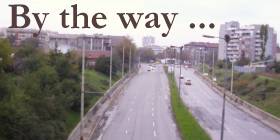
|
with Richard Graves
3. Macabre Dance
|
All performers presumably have nightmares from time to time, but conductors
probably have more than their fair share. After all, they are answerable
for the actions and possible shortcomings of maybe a hundred other folk
as well as themselves. Imagine, for instance, the potential for disaster
implicit in being on tour with a large orchestra and playing at a different
venue each night.
Everything appears to be going smoothly. The players have all turned
up and some have already begun to take their seats on the platform. Double
basses have been set in place, so have the timps, the cymbals, and the big
bass drum. The concerto soloist is safely ensconsed with a coffee in the
Green Room, the orchestral parts are in position on the music stands and
the conductor is straightening his bow tie and giving a final touch to his
buttonhole carnation. He is just about ready to stride on to the podium
for the opening item, Danse Macabre, when there is an urgent tug
at his sleeve. One of the percussionists has something to say and is plainly
in a real panic.
'Sorry, sir, but they have forgotten to send on the xylophone. It simply
hasn't arrived....'
As we all know, the xylophone provides some of the most memorable eerie
touches in the Saint-Saens score. To omit its brittle sound from the performance
would suggest a boneless skeleton and be unthinkable. Too late at this stage
to change the programme, so what to do?
This is precisely what happened to the splendidly versatile Sir George
Henschel (1850-1934) who in his autobiography Musings and Memories
(Macmillan 1918) records what happened next.
'All of a sudden it came to me: I knew that in the score nearly every
note given to the xylophone was duplicated by the same note in the oboe;
it was not so much the actual musical note of the xylophone which mattered,
as rather the mere sound of the wood struck by the hammers. So I called
for the gentlemen of the percussion.....to play the whole of the part on
the leg of a chair!....Nobody saw the chair, everybody heard the sound of
the wood.....The result was an unqualified success...
Henschel added that when he met Saint-Saens in Paris a bit later and
recounted the story, the composer was much amused. Has the same trick ever
been tried since, one wonders? After all, touring the whole gear for a big
orchestra is a cumbersome and expensive business... and whereas you can't
expect to come across stray xylophones all that often, any old hall can
produce a wooden chair leg...
Copyright © Richard Graves, April
29th 1999
In The Shadows >>
|